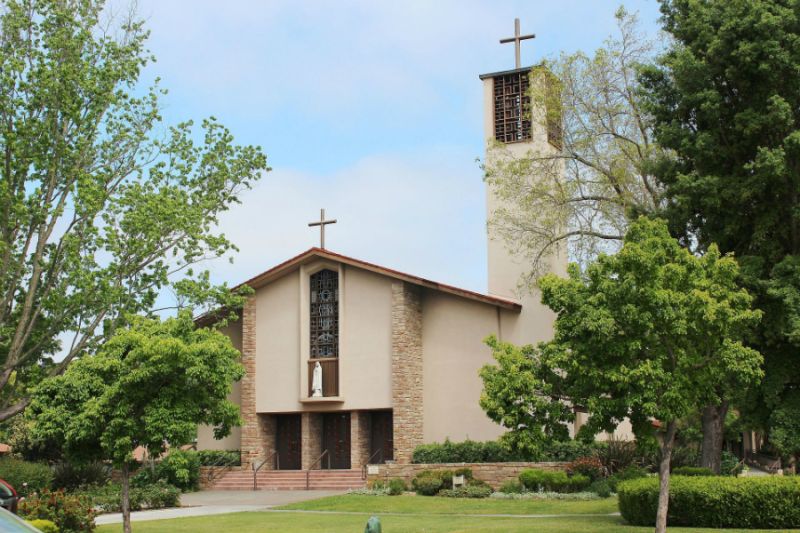Mexican diocese building new shrine to martyrs of Cristero War
 The project of the sanctuary of the holy martyrs of the Cristera War in Mexico is expected to be completed in 2026. / Credit: SAAX Arquitectura Construcción
The project of the sanctuary of the holy martyrs of the Cristera War in Mexico is expected to be completed in 2026. / Credit: SAAX Arquitectura Construcción ACI Prensa Staff, Oct 18, 2023 / 18:25 pm (CNA).
The Archdiocese of Durango in Mexico has begun the construction of a shrine dedicated to the martyrs who offered their lives during the Cristero War. The new church is expected to be completed by mid-2026.
The Cristero War, an armed conflict in Mexico that lasted from 1926 to 1929, was triggered by anticlerical legislation enacted by then-president Plutarco Elías Calles, which unleashed bloody religious persecution.
Not only did many who took up arms to defend their faith lose their lives, but the government also killed some who peacefully expressed their faith in public.
The martyrs to be venerated in this new shrine are saints Mateo Correa Magallanes, Salvador Lara Puente, Luis Batiz, Manuel Morales, and David Roldán. Their feast day is celebrated on May 21. On that day in 2000, Pope John Paul II canonized them in St. Peter’s Square at the Vatican.
In an interview with ACI Prensa, CNA’s Spanish-language news partner, Father Refugio López Muñoz, who is overseeing the construction of the church, noted that these holy martyrs gave “until the last moment a brave and generous testimony of their faith in Christ Jesus and their love for the Church.”
The Facebook post by SAAX Architecture + Construction along with architectural renditions of the future shrine detail that “the total area of the complex is 1,023 square meters [11,000 square feet], which is composed of a central nave with a capacity for 285 people seated and at its maximum occupancy 745 people standing, a sacristy, a chapel for the Blessed Sacrament, an administrative area in which there are the stairs that allow access to the exterior mezzanine, which serves as an altar for the large celebrations to take place at the small plazas outside, a 330-meter [108-foot]-high bell tower, which seems to break up at its highest point and retains its firmness and solidity at its base, alluding to the holy martyrs who look like their faith was taken away, however it remains firm in Christ. At the end of the nave is the columbarium designed to be built in later stages.”
López noted that the shrine is being built in the place where these martyrs were killed and it is intended to be an important pilgrimage destination. Although the construction works are still in progress, “every month hundreds of people come to express their faith,” the priest said.
The shrine, he explained, is intended to be a place for “encounter with God, a place to renew the baptismal commitment; an encounter of conversion,” because “we are not simply building walls, but we want to lift up our hearts to God, Our Lord, through these persons who invite us to come to God.”
The priest also highlighted that the holy martyrs “are a testimony of joy and generosity” for today’s Christians, who inspire people “to make a difference, each person from their own home.”
Who were the holy martyrs of Durango?
According to the Archdiocese of Durango, Father Mateo Correa was martyred for keeping the seal of confession: “He gave himself up for love of evangelization and endured hunger and a lot of persecution” in the Durango area. He was arrested on Feb. 3, 1927, and was shot three days later.
Father Luis Batiz was a member of the League for the Defense of Religious Freedom, an association that through peaceful means tried to obtain the repeal of the laws promulgated by President Calles against the Catholic Church. He was denounced for “plotting against the government.” On the night of Aug. 14, 1926, a platoon of soldiers showed up looking for him at his house and executed him.
Along with Father Batiz were David Roldán and José Salvador Lara Puente, vice president and secretary of the League for the Defense of Religious Freedom, respectively. They were gathering signatures to ask the government to repeal the persecution laws when they were arrested and taken in front of the firing squad. The Mexican archdiocese noted that they gave up their lives “to the cry of ‘Long live Christ the King and the Virgin of Guadalupe.’”
Manuel Morales was a student at the Durango seminary as well as secretary of the Leo XIII Catholic Workers Circle, a member of Mexican Youth Catholic Action, and president of the League for the Defense of Religious Freedom. Upon learning that Batiz had been taken to prison, he moved quickly to seek his release. The soldiers arrested him and offered him his freedom “in exchange for recognizing Calles’ orders.” When he refused, he was executed on Aug. 15, 1926, on the solemnity of the Assumption of the Blessed Virgin Mary.
This story was first published by ACI Prensa, CNA’s Spanish-language news partner. It has been translated and adapted by CNA.




